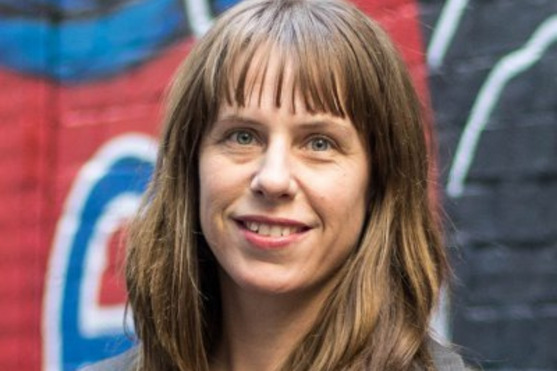Are tiny homes the solution to the affordable housing crisis?

Australia has two of the top ten most unaffordable housing markets in the world in Sydney and Melbourne. A global pandemic has not made this situation better, with increased property prices in most Australian capitals. There have also been dramatic price increases in regional areas largely due to migration as many continue to work from home.
One proposed solution to housing affordability is tiny homes. It seems an easy answer, in theory; reduce costs by reducing the size of dwellings. This could have the additional benefit of reducing consumption and creating more sustainable homes. Tiny homes promise much and have recently been made popular by an abundance of home renovation-type TV shows.
In America, the model has been used to house rough sleepers en masse for instance Los Angeles has built tiny home villages. In Canada, Laneway Houses have been used in several major, unaffordable cities as a way to extend land potential. Laneway Houses are smaller, secondary dwelling on a single family home not dissimilar to their iconic Australian version – such as the granny flat. So do tiny homes have a role to play in helping ease Australia’s affordable housing crisis?
Getting tiny homes right
Deakin University recently completed their MicroVillage research project that explored the viability of affordable tiny houses. They looked at four key areas: 1. building and design, including ageing in place and environmental performance 2. regulatory planning barriers 3. finance and 4. community integration. Their research looked at both tiny homes on wheels and homes on foundations with models ranging from 20-48 square metres.
Overall, the tiny home does not fare well, particularly if compared to the current standard apartment block. For those who wish to increase the thermal performance of their house, while minimising consumption of building materials, tiny homes are less efficient. Think of a multi-unit apartment block, where neighbouring units provide each other with insulation, or in the building process, where neighbouring units share walls.
Perhaps most surprising is the finding that tiny homes are relatively expensive to build. Financers are unwilling to provide a standard mortgage for tiny homes – which are viewed more like vehicles, which depreciate, rather than traditional houses – meaning financing is unavailable or expensive. Site remediation, common services and infrastructure cost still need to be added to the equation and as with all housing, the cost of land still proves a significant expense.
The researchers made several recommendations to make tiny homes a viable affordable housing option. Planning reform is required at both a national and local level. This includes providing clear regulations that define and permit smaller dwellings and removing the automatic requirements associated with other dwelling types such as parking and setbacks. Design of tiny homes still needs refinement, particularly to suit the needs of people who want to age in place. Notably, the research found that stigma, stereotypes and negative public attitudes present a significant barrier to the viability of tiny homes, which will require community education to change.
When tiny works
While tiny homes may not solve the affordable housing crisis on their own, there are instances when the model is the right solution to preventing homelessness. Below are three examples of when tiny homes, often supported by philanthropy, have been used to house Australians.
A first-of-its-kind, Launch Housing’s Harris Transportable Housing Project created 48 tiny homes across seven sites using parcels of vacant VicRoads land in Melbourne’s western suburbs. Underutilised land was leased at a peppercorn rent to Launch for an initial period of 10 years. The project was a partnership between The Harris Family, Victorian Property Fund, VicRoads and Department of Families, Fairness and Housing (formerly DHHS). The architecturally designed homes are single dwellings, but notably have a small outside fenced area to allow residents to have pets.
Kids Under Cover have been using the idea of tiny homes for over 30 years, supporting vulnerable young people who are either experiencing homelessness or at risk of homelessness through their Studio Program, built in the backyards of a family or carer’s home. More recently, Kids Under Cover have created a microvillage for young people called Village 21, placing a group of studios on a remodelled car park for young people leaving out-of-home care. Kids Under Cover have taken their knowledge of studios one step farther to create a new social enterprise to support their core business through Nestd, selling architecturally designed tiny homes.
Habitat for Humanity’s Bushfire Recovery Housing pilot program included the building of three, 2-bedroom temporary houses in the Towong Shire, made from shipping containers. Funded by Lord Mayor’s Charitable Foundation, these temporary houses are for families so they can have a safe and secure place to live while they rebuild their homes following the Black Summer bushfires. This project was the first time Habitat for Humanity has delivered disaster response in Australia, noting that suitable temporary housing accommodation is critical to helping these communities recover, thrive and build back strength, stability and independence.
Of course, there is no single solution to the housing affordability crisis. The above examples show how the use of tiny homes have provided solutions to specific cohorts. These examples show how philanthropy can support charities to use innovative solutions to solve enduring community issues.
- Read the full Microvillage report here: Microvillage Final Report
- Read the executive summary here: Microvillage Final Report – Executive Summary
- The Geelong Microvillage project was funded by the Geelong Community Foundation and Lord Mayor’s Charitable Foundation.